Optional Media Tour to disaster affected area in conjunction with (World Press Briefing) WPB, hosted by Tokyo Metropolitan Government (SPORTS SMILE CLASSROOM MIYANOMORI).
There were 24 foreign media representatives from 14 different countries around the world.
The affected people were really brave because they were alive and kicking in those affected areas and were still putting their efforts to reconstruct their village.
We salute those Brave People of JAPAN.
SPORTS SMILE CLASSROOM MIYANOMORI ELEMENTARY SCHOOL:
Miyanomori Elementary School built after the great earthquake. An athlete has a special class at the new primary school built after the tsunami.
After the arrival at Miyanomori Elementary School, Higashimatsushima City Miyagi prefecture as we came out of the bus.
When we entered inside the Gymnasium of School so first an introduction was given about “Sports Smile Classroom” by Hiroyuki Katsumata (Manager of General Affairs of Education) and Ayumu Muraoka (Principal of School).
GAME TIME IN GYMNASIUM/SPORTS SMILE CLASSROOM MIYANOMORI:
Sports-Kokoro Project was organized by the Japan Sport Association (JSPO), the Japanese Olympic Committee (JOC), the Japan Football Association (JFA), and the Japan Top League Alliance (JTL).
About 26 students (19 Boys, 07 Girls) of School played softball with Dream Teacher Satoko Mabuchi (Gold Medalist, Softball 2008 Beijing Olympic Games).
Purpose of this session was to spread happiness among the affected children of Sports Smile Classroom Miyanomori.
The activity which consisted on physical activities, games etc. continued for 35 minutes.
At the end of this session we went towards a classroom where about 40 students were present.
Where dream Teacher shared her efforts in detail that how I got this gold medal and real efforts never waist and it is our life time asset.
The students asked questions to the dream teacher after showing slides and then she also participated in different games with them.
SPORTS SMILE CLASSROOM MIYANOMORI SPORTS SMILE CLASSROOM MIYANOMORI SPORTS SMILE CLASSROOM MIYANOMORI
Our next visit was Seapal Pier Onagawa, a recently opened shopping area in the coastal city of Onagawa, one of the most heavily damaged towns by the tsunami.
Yoshiaki Suda, Onagawa Town Mayor welcomed all of us and then he presented the presentation about reconstruction of Onagawa.
He also added that we had to work together and to help affected people. It was not one individual but teamwork.
We worked with the help of local people and it also completed by the cooperation of them. We had to convince our people to do this as well.
Cobaltore Onagawa
Football club based in Onagawa Town, Miyagi Prefecture.
Founded in 2006, it promoted to the Japan Football League (JFL, the only amateur league in Japan) in 2018.
The club house and players’ dormitory completely destroyed in the Great East Japan Earthquake, but all the players were safe.
After a year of hiatus, the club restarted playing in 2013. It continues to play an active role in the community today.
The group then attended a talk session with representatives from Cobaltore Onagawa, a local football team which recently promoted to the Japan Football League, the fourth level semi-professional league.
The speakers were Yuji Abe, General Manager of Cobaltore Onagawa, and Kosei Chiba, the first homegrown player on the team who experienced the 2011 earthquake when he was an elementary school student.
They told the journalists how the sport helped energise and unite the local community.
The facilitator was Masa Takaya, spokesperson for the Tokyo Organising Committee of the Olympic and Paralympic Games.
Midai Suzuki
Then we met Midai Suzuki, a local 6th grade student in Elementary School student who had won the poster competition for the Olympic and Paralympic Games organised by the Tokyo 2020 Organising Committee this spring.
She showed us her masterpiece of torn-paper art, which portrayed various Paralympic athletes, highlighting each athletes’ impairment in the colour of the gold medal because Midai herself has an impairment in her legs and wanted to express her belief that an “impairment is the person’s individuality” that people should respect and the person should be proud of.
On the second day, the bus with the participants went down to Fukushima Prefecture and visited an elementary school in Showa, a small village with a population of about 1,400 of which 55 per cent are aged 65 and over-the second largest percentage in Fukushima and seventh in Japan as of 2017.
They witnessed another example of “the power of sport” which Tokyo 2020 has promised to utilise to realise a society in which everyone can participate in its action & legacy plan.
The journalists saw six Olympians including Mai Nakamura, silver and bronze medallist in the Olympic Games Sydney 2000, and Mika Sugimoto, a silver medallist at London 2012, interact with about one hundred locals including young children through various sport activities.
The event called “The Olympic Day Festa” was consecutively in the disaster area to support the recovery of the Great East Japan Earthquake with the slogan “Bringing Smiles through Sports”.
Since 2011, it has held in more than 120 venues in Fukushima and the other four affected prefectures.
A total number of 20,273 local people and 658 athletes, including some from overseas, participated in the events as of 31 March 2018.
Villagers in Showa had suffered little direct damage from the earthquake, thanks to its distance from the epicenter.
However, “rumours” of radioactivity due to the nuclear accident have severely affected its main industries of tourism and agriculture, resulting in a drastic decrease of tourists and sales of agricultural products and seriously damaging the local economy.
The tour’s last stop was Aizu Wakamatsu City, a popular tourist destination which is well-known for its samurai heritage and rich cultural history in western Fukushima.
The journalists had a chance to try its local cuisine “wappa-meshi”, a bowl of rice with local beef and vegetables steamed in a round wooden container.
They then visited one for the sake breweries which has over 160 years of history, and learned about the production process and tasted the sake.
To learn about the history of Fukushima, their final destination was Tsurugajo, a traditional Japanese castle which is a concrete replica of the original one built more than 600 years ago. —- Group Images Credit: TMG
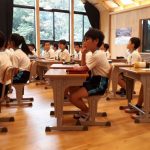

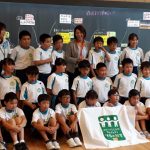
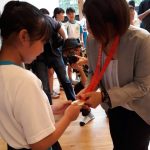
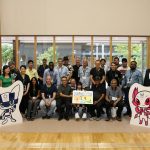
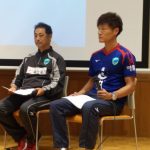
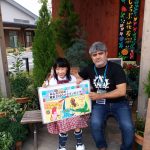
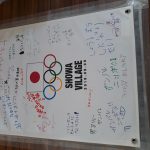


Leave a Reply
You must be logged in to post a comment.